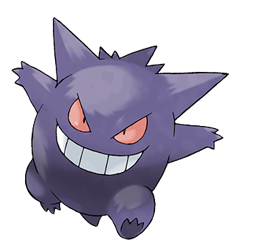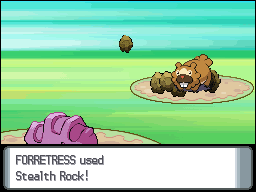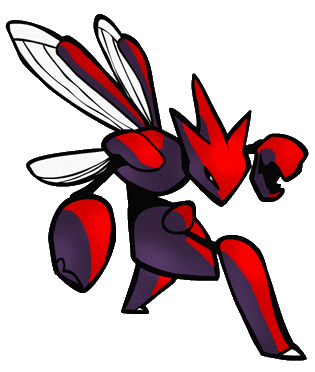This post has not been edited by the GamesBeat staff. Opinions by GamesBeat community writers do not necessarily reflect those of the staff.
Since part 1, 2 and 3 of the history of Pokémon's metagame, there have been a lot of recurring themes and ideas. Every generation had at least one powerful and memorable change that easily makes it the reason why everyone remembers that generation. Also, the metagame at this point has been ancient history to many trainers.
But now we're in our 4th generation with the Diamond/Pearl generation, or DP generation. DP was the first Pokémon game on the DS and it’s still fresh in many trainers' minds. But in my opinion, the changes brought forth in DP were some of the biggest changes ever. Old contenders flailed about in the wake of these changes. Old ideas had to be reworked as long held mechanics were turned on their head. And much like SkarmBliss and Curselax before it, one thing so defined the generation that it would be forever remembered no matter how much the metagame may change in the future. Many readers are probably familiar enough with the DP generation to know many of the things I'll be talking about.
The 4th Generation: The Second Great Split and Getting Rocks Up
 Up until now, one of the strongest special attackers in the game, Gengar, would never be caught dead actually using a ghost-type attack. That's because ghost-type attacks were calculated with the Pokémon's attack stat. So even if Gengar were to use a ghost-type attack for Same Type Advantage Bonus (STAB, which is a 50% increase in damage) it would be vastly inferior to something like Thunderbolt, as even without STAB, its special attack was much better.
Up until now, one of the strongest special attackers in the game, Gengar, would never be caught dead actually using a ghost-type attack. That's because ghost-type attacks were calculated with the Pokémon's attack stat. So even if Gengar were to use a ghost-type attack for Same Type Advantage Bonus (STAB, which is a 50% increase in damage) it would be vastly inferior to something like Thunderbolt, as even without STAB, its special attack was much better.
Since the RBY generation, typed attacks which gave off an impression of having a physical presence used the attack stat while types with a vaguely magic-like impression used special attack. But this mechanic was changed in the DP generation. Many people call it the physical/special split.
Now, individual attacks, regardless of type, would use attack or special attack because it was deemed physical or special. Now Gengar could use a STAB ghost attack, which used its superior special attack, like Shadow Ball. A much more physically inclined ghost-type like Dusknoir could use Shadow Punch, which is obviously physically based. Now every Pokémon could have a reliable STAB move and not have to worry about whether or not it had the power to back it up.
Old walls like the classic SkarmBliss combo would now have to rethink what kind of hits they will be taking. In the past, Skarmory would take a fighting attack no problem with its powerful defense. But despite being a fighting attack, Aura Sphere would hit Skarmory's much weaker special defense and it would take quite a bit of damage. Likewise, Blissey used to take special attacks like water-type moves all day. But now Waterfall is a physical water attack, which would simply blow holes in Blissey's health pool.
As foreshadowed in the previous installments, the metagame has slowly been picking up speed since the stall and defensive teams of GSC. But it's now come to a head in DP as trainers began favoring effective damage output over minimizing oncoming damage.
 Look over the overused tiers of many websites and you'll see a recurring attribute in many Pokémon in the OU: speed. While defensive Pokémon are certainly not hard to find at all, many of the most threatening Pokémon are either naturally fast or have access to Agility. Adding more to the offensive theme of DP was the introduction of two new Choice hold items. While held, one of the user's stats is instantly boosted by 50% at the cost of locking them into a move for as long as they remain on the field. Choice Band, which has been around since RSE, boosted attack. Choice Specs on the other hand, boosted special attack while Choice Scarf boosted speed. These Choice items meant that in return for becoming predictable, a Pokémon could attack right away without spending a turn to set up with a boosting move like Swords Dance or Agility.
Look over the overused tiers of many websites and you'll see a recurring attribute in many Pokémon in the OU: speed. While defensive Pokémon are certainly not hard to find at all, many of the most threatening Pokémon are either naturally fast or have access to Agility. Adding more to the offensive theme of DP was the introduction of two new Choice hold items. While held, one of the user's stats is instantly boosted by 50% at the cost of locking them into a move for as long as they remain on the field. Choice Band, which has been around since RSE, boosted attack. Choice Specs on the other hand, boosted special attack while Choice Scarf boosted speed. These Choice items meant that in return for becoming predictable, a Pokémon could attack right away without spending a turn to set up with a boosting move like Swords Dance or Agility.
But believe it or not, the faster pace of DP is not the main thing to take away from DP. One move alone transformed the metagame to the same degree as Alakazam in RBY, Curselax in GSC, and Sand Stream Tyranitar in RSE. And we're not talking about a Pokémon here! That move was Stealth Rocks.

"Oh boy…"
Stealth Rocks is an entry hazard like Spikes. Every time a Pokémon arrives on the field, it receives damage immeditely due to the presence of entry hazards. However, unlike Spikes, which does a percent of damage based on the number of layers of Spikes in play, Stealth Rocks did a percent of damage based type resistance to rock-type attacks. Stealth Rocks only needs to be used once, but if you sent out a flying-type Pokémon while Stealth Rocks were on your playing field, it would instantly lose 25% of its health. God forbid you send out something like Ninjask, which was part bug and part flying. That's 50% of its health gone just from arriving on the field!
The metagame was shaped like clay with the existence of Stealth Rocks. When Pokémon were analyzed for competitive power in DP, the first thing that was examined was its resistance to Stealth Rock. You could expect Stealth Rock to be present in many matches because many Pokémon in the lead position are put on the front just because they were fast and could immediately use get rocks up. Though Spikes has existed for a while before Stealth Rocks, the convenience of only needing one turn to set it up and the return in potentially crippling some Pokémon while getting residual damage on most other Pokémon made Stealth Rocks so prevalent that many positions were either designated for Stealth Rocks or became more wide spread because of it.
Leads would get rocks up, anti-leads would attempt to use Taunt and prevent rocks from being set up, Spinners would use the move Rapid Spin to remove entry hazards, and Spin Blockers were defensive ghost-types who would block the use of Rapid Spin and keep entry hazards on the field. To put it simply, get used to Stealth Rocks because you'll see it a lot in competitive battling.
And now for the threats: I've already mentioned Gengar. It was blessed by the physical/special split and could now begin using STAB special attacks like Shadow Ball. Starmie also continued to be important in OU but was now in as high demand as ever since it was one of the few Pokémon that learned Rapid Spin to get rid of those pesky rocks. Aerodactyl actually gets a mention here now as it discovered a niche as a suicide lead. Despite its low defenses and predictable move pool, trainers used Aerodactyl's speed to guarantee Stealth Rocks while it also had access to Taunt, which prevents all moves that didn't directly attack. That means you could prevent enemy Stealth Rocks then get your own rocks up. But probably the biggest threat, much in the same way as Curselax and Alakazam before it, was Scizor. With its new ability, Technician, which multiplies the base power of attacks that are 60 or less by 1.5, Scizor also gained a new attack which gelled perfectly with Technician: Bullet Punch. With a base power of 40, STAB, Technician, and first move priority all working together with a Choice Band, nothing really wants to take one of these bad boys. Scizor is the reason why Magnezone rose in popularity with its natural resistance to anything Scizor could throw plus its Magnet Pull ability to trap Scizor!
What do you see? If you're facing it, you see a problem.
 Many of the Pokémon who fell from grace during this generation fell because of the introduction of the Choice items. While Snorlax is still powerful, Pokémon using Choice Band could immediately hurt it before Snorlax would set up with Curse. Alakazam finally fell from the borderline tier to underused since Choice Scarf allowed many threatening Pokémon to outspeed it. Rhyperior, the evolution to Rhydon, simply fell to UU because of the new competition it is facing from things like the faster attacking Agility-Metagross and the new Gliscor, which could recover health with Roost.
Many of the Pokémon who fell from grace during this generation fell because of the introduction of the Choice items. While Snorlax is still powerful, Pokémon using Choice Band could immediately hurt it before Snorlax would set up with Curse. Alakazam finally fell from the borderline tier to underused since Choice Scarf allowed many threatening Pokémon to outspeed it. Rhyperior, the evolution to Rhydon, simply fell to UU because of the new competition it is facing from things like the faster attacking Agility-Metagross and the new Gliscor, which could recover health with Roost.
 Many new threats are only pseudo-new, as many new powerful Pokémon were new evolutions of older Pokémon. Weavile is another textbook example of high speed, high attack but uniquely as an ice-type, which is in high demand to combat dragons. Togekiss became notorious for the paraflinch strategy, paralyzing with Thunder Wave then flinching endlessly with Air Slash boosted by Serene Grace. With paralysis and Serene Grace flinching together, the opponent statistically only has a 30% of actually doing anything. Infernape gained fame for being an extremely fast, mixed, glass cannon. Walls have a tough time against Infernape because chances are, Infernape is carrying both physical and special attacks to break through any wall unless it was also mixed in terms of defense.
Many new threats are only pseudo-new, as many new powerful Pokémon were new evolutions of older Pokémon. Weavile is another textbook example of high speed, high attack but uniquely as an ice-type, which is in high demand to combat dragons. Togekiss became notorious for the paraflinch strategy, paralyzing with Thunder Wave then flinching endlessly with Air Slash boosted by Serene Grace. With paralysis and Serene Grace flinching together, the opponent statistically only has a 30% of actually doing anything. Infernape gained fame for being an extremely fast, mixed, glass cannon. Walls have a tough time against Infernape because chances are, Infernape is carrying both physical and special attacks to break through any wall unless it was also mixed in terms of defense.
With the expanding size of choices in Pokémon in its fourth iteration and the increasing strength of sweepers, the pool of questionable Pokémon was growing. Do not mistaken Pokémon regulated to the neverused tier as being bad though. Creative and persistent trainers can certainly design teams to support the shortcomings of certain Pokémon like Gardevoire, Luxray, or Ninetails. Typhlosion is deemed an NU Pokémon but I certainly liked using it on my Sunny Day teams, spraying powerful Flamethrowers and Solarbeams. But trainers must remember that with Stealth Rocks and many powerful Pokémon being popular, tiers in Pokémon's metagame simply exist as a guide for you. No one's saying you can't be successful with Charizard. Just remember that it faces stiff competition from things like Infernape or even Arcanine. And unlike the previous two, Charizard will lose a lot of health from Stealth Rocks.
Next time on the history of Pokémon’s metagame, we tackle Black and White, the current generation! We’ll explore not just unexplored territory but probably history in the making as well. More new abilities define incredibly powerful threats and old champions return with some of their former glory! But all is not well as some people suspect that the metagame in the 5th generation may be somewhat broken and overpowered!

